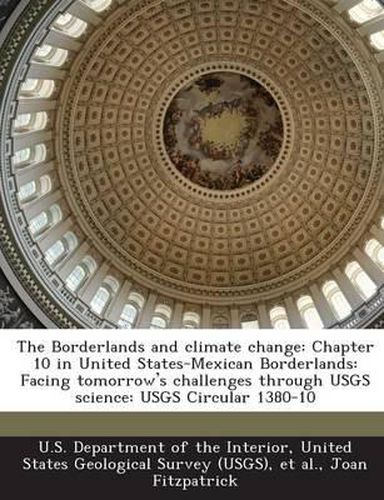Readings Newsletter
Become a Readings Member to make your shopping experience even easier.
Sign in or sign up for free!
You’re not far away from qualifying for FREE standard shipping within Australia
You’ve qualified for FREE standard shipping within Australia
The cart is loading…






The prediction of global climate change in response to both natural forces and human activity is one of the defining issues of our times. The unprecedented observational capacity of modern earth-orbiting satellites coupled with the development of robust computational representations (models) of the Earth’s weather and climate systems afford us the opportunity to observe and investigate how these systems work now, how they have worked in the past, and how they will work in the future when forced in specific ways. In the most recent report on global climate change by the Intergovernmental Panel on Climate Change (IPCC; Solomon and others, 2007), analyses using multiple climate models support recent observations that the Earth’s climate is changing in response to a combination of natural and human-induced causes. These changes will be significant in the United States-Mexican border region, where the process of climate change affects all of the Borderlands challenge themes discussed in the preceding chapters. The dual possibilities of both significantly-changed climate and increasing variability in climate make it challenging to take full measure of the potential effects because the Borderlands already experience a high degree of interannual variability and climatological extremes.
$9.00 standard shipping within Australia
FREE standard shipping within Australia for orders over $100.00
Express & International shipping calculated at checkout
The prediction of global climate change in response to both natural forces and human activity is one of the defining issues of our times. The unprecedented observational capacity of modern earth-orbiting satellites coupled with the development of robust computational representations (models) of the Earth’s weather and climate systems afford us the opportunity to observe and investigate how these systems work now, how they have worked in the past, and how they will work in the future when forced in specific ways. In the most recent report on global climate change by the Intergovernmental Panel on Climate Change (IPCC; Solomon and others, 2007), analyses using multiple climate models support recent observations that the Earth’s climate is changing in response to a combination of natural and human-induced causes. These changes will be significant in the United States-Mexican border region, where the process of climate change affects all of the Borderlands challenge themes discussed in the preceding chapters. The dual possibilities of both significantly-changed climate and increasing variability in climate make it challenging to take full measure of the potential effects because the Borderlands already experience a high degree of interannual variability and climatological extremes.